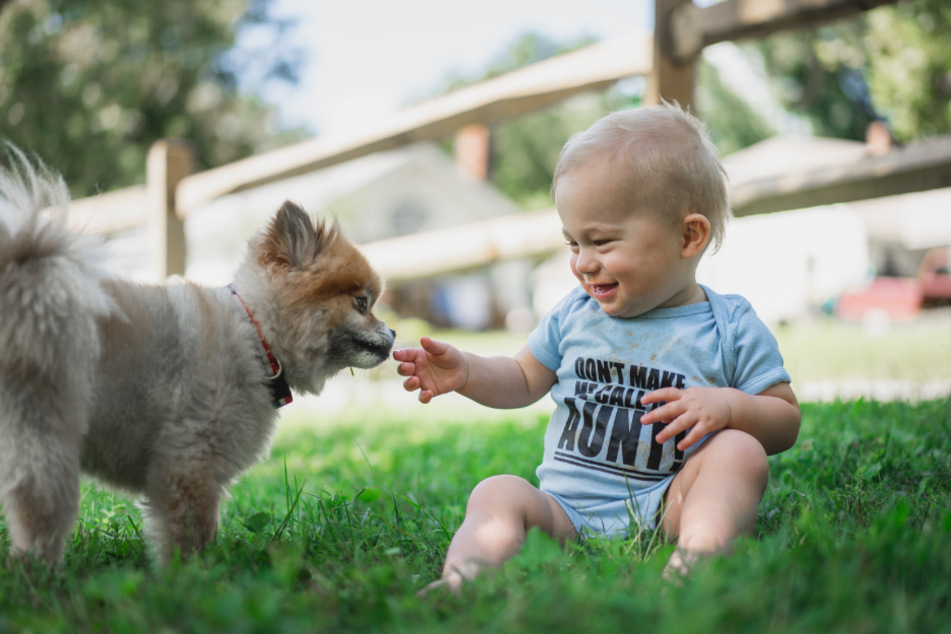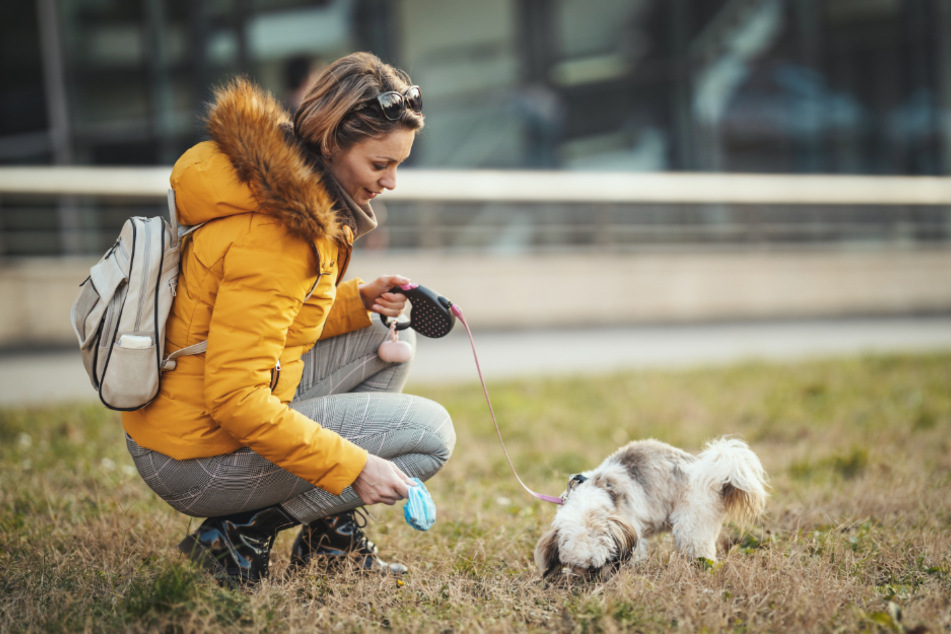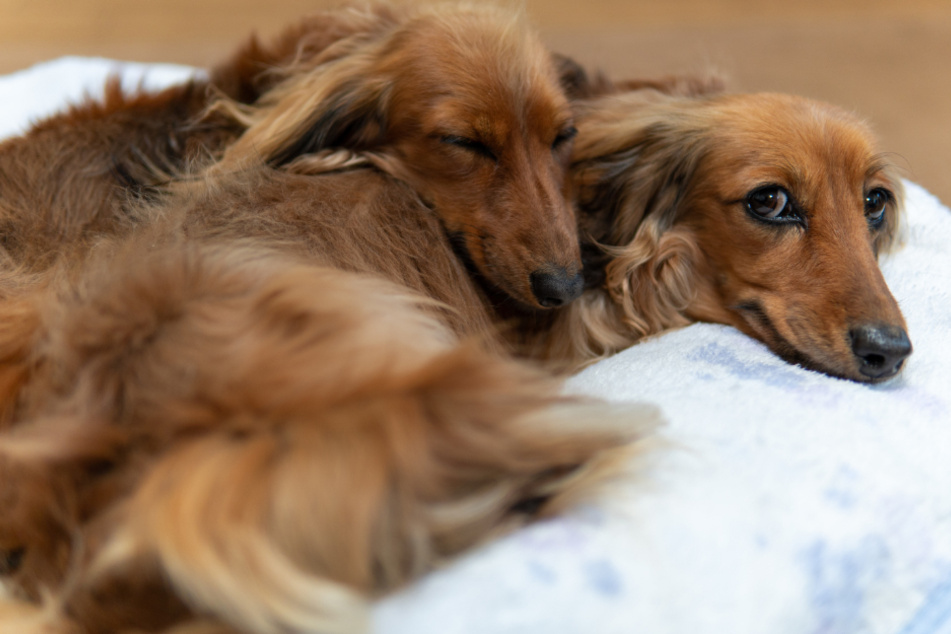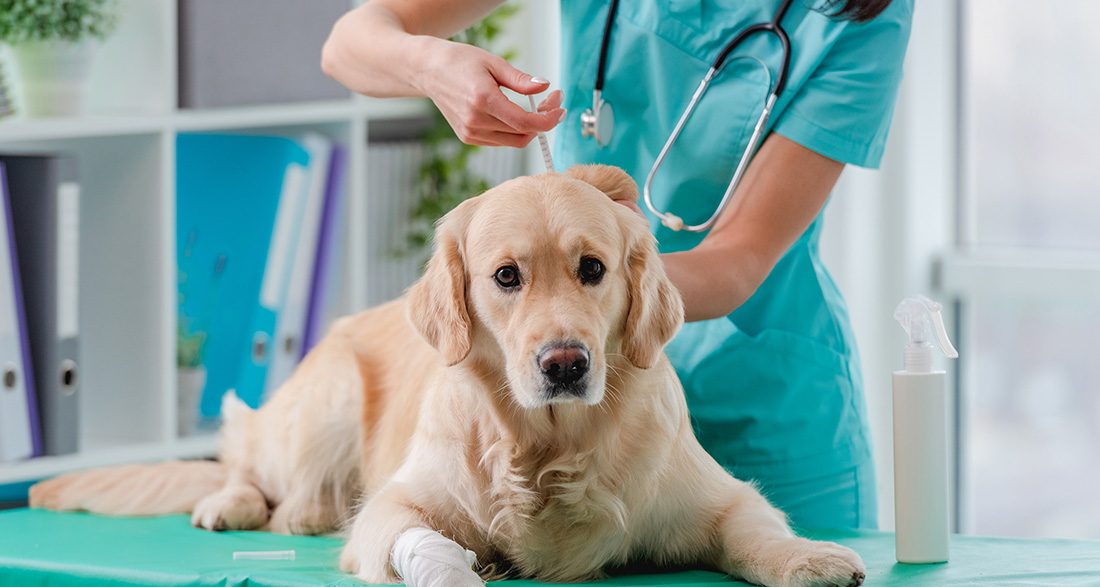Why does your dog constantly have slimy and strongly smelling diarrhea? Perhaps it is infected with Giardia. The dog guide explains the typical symptoms of giardiasis and what you should know about treating these intestinal parasites.
What are Giardia?
Giardia is a genus of single-celled parasites that infest the small intestine as well as the large intestine and gallbladder of their host.
Giardia is not uncommon in dogs, but these parasites only cause gastrointestinal diseases when the animal’s immune system is weakened or overloaded.
Puppies and older dogs, in particular, are susceptible to Giardia.
Giardia leads to nutrient deficiencies and attacks the dog’s mucous membranes, causing the dog’s stool to be covered in mucus.
If a dog is suffering from giardiasis, a diarrhea disease caused by Giardia, veterinary treatment is urgently required.
How do dogs become infected with Giardia?
A dog or another host infected with Giardia excretes cysts consisting of two Giardia. When these are ingested by another animal through the mouth, infection occurs. Outside the host, the cysts can survive in a moist environment for several weeks to months.
Possible risks of Giardia infection for dogs:
- eating contaminated feces
- drinking from puddles and other contaminated water sources
- swimming in waters with Giardia
- sniffing the anus of an infected animal
- eating contaminated food
- licking contaminated surfaces
If a dog is infected, it can repeatedly reinfect itself, for example, by eating its own feces or licking its own anus.
Flies that first land on infected feces and then perhaps on dog food could transmit Giardia in this way. Another possibility is that dog owners introduce the small intestine parasites themselves if they step on contaminated feces or have contact with an infected animal. Places like dog parks and dog schools can be hotspots for parasites and other germs.

Can Giardia be transmitted from dogs to humans?
Humans can also become infected with Giardia, leading to gastrointestinal problems. Transmission between animals and humans occurs through smear infection and droplet infection.
However, dog owners should not panic because only a few of the many species of Giardia are dangerous to humans. People with weakened immune systems should be particularly cautious. Children and older people are also at risk.
Transmission of Giardia can occur if hands are not washed after picking up dog feces, touching the dog’s bed, or stroking the fur in the anus area. However, infection only occurs if humans actually ingest Giardia through the mouth.
Always ensure that the dog receives adequate attention and stimulation despite the illness.
Does my dog have Giardia?
If you suspect that your dog may have Giardia, it is best to take the animal for examination to a veterinary practice immediately. A test is usually performed there, and if the diagnosis is confirmed, a treatment plan is determined.
However, the test may come back negative, or the dog may show no symptoms in general but still have Giardia. This dog can infect other animals with Giardia but is not necessarily at risk of health problems. Giardia becomes problematic only when the dog’s immune system is overloaded.

Symptoms of Giardia in Dogs
Characteristic of Giardia in dogs is periodically recurring, foul-smelling, and slimy diarrhea. There are additional symptoms and behavioral abnormalities that can help you recognize Giardia in dogs.
Symptoms of Giardia in Dogs:
- Light, watery, slimy, and sometimes bloody diarrhea that frequently recurs
- Extremely foul-smelling stool
- Undigested food remnants in the stool
- Weight loss
- Bloating
- Abdominal cramps
- Vomiting
- Loss of appetite
- Apathy
- Fever
Diarrhea in dogs can also become chronic. Since the concentration of Giardia and the strength of the dog’s immune system can fluctuate, the dog may not have diarrhea all the time but experiences it periodically.
Giardia Test in Dogs
To test for Giardia in dogs, a fecal sample consisting of the stool from the last three or four days must be submitted. This is necessary because Giardia may not be excreted every time, making a negative test only partially informative.
A dog showing clear symptoms but testing negative still needs treatment or further investigation. The diarrhea caused by Giardia, nutrient deficiency, weight loss, and damage to the mucous membranes could eventually lead to the death of the animal if left untreated.
After treatment, a test is often performed again to check the success of the treatment, which is also only partially informative.

Treatment for Dogs with Giardia
For the treatment of giardiasis in dogs, a visit to a veterinary practice is advisable in any case. Medication is usually the most effective treatment for Giardia in dogs.
Those who attempt home remedies for Giardia in dogs will have only limited success. Since diarrhea is mostly intermittent rather than continuous, home remedies may seem effective, even though nothing has actually changed.
Treating Dogs with Medications
When treating giardiasis with medications, a therapy consisting of several drugs according to a protocol is often performed because Giardia are highly resistant and adaptable.
Common medications for Giardia in dogs include antibiotics (e.g., metronidazole) or anthelmintics (e.g., Panacur).
The duration and frequency of drug therapy for Giardia in dogs depend on the dog’s health. It may be that the dog is doing well again, and the treatment is terminated even though not all Giardia have disappeared.
The duration of medication therapy for Giardia in dogs can vary from animal to animal.

Hygiene Measures for Dogs
The basis for successful treatment of Giardia in dogs is strict hygiene. The risk of reinfection should be minimized as much as possible.
- Measure 1: Thoroughly clean all contact surfaces and the dog’s sleeping areas regularly. Wash all carpets, fabric blankets, pillows, or similar items at around 60 degrees Celsius. Steam cleaners can be used to heat and clean floors.
- Measure 2: Dispose of anything that has come into contact with the infected dog and cannot be cleaned. It is best to give the dog only washable and insensitive items to play and sleep with.
- Measure 3: Thoroughly clean all food and water bowls for the dog daily with hot water. Do not feed the dog outside the home. Do not leave the food standing for long, and renew the water regularly.
- Measure 4: Be careful when your dog is outdoors not to eat feces and not to drink from puddles. Always have fresh and clean water for the dog to drink.
- Measure 5: Collect and dispose of the feces in the dog toilet or household waste. Then wash and disinfect your hands.
- Measure 6: Keep the anus and the surrounding area around the dog’s buttocks clean and dry. For some dog breeds, it is advisable to trim the fur around the anus. Regular bathing of the dog removes clinging cysts.
- Measure 7: Wash hands regularly to avoid infecting both the dog and yourself with Giardia.
- Measure 8: Have all dogs and cats in the household treated. If one animal is infected with Giardia, it is very likely that all animals are affected. Regardless of whether the animals show no symptoms, treatment may be necessary. Dog owners can consult their veterinarian for advice.
- Measure 9: During treatment, avoid contact with other dogs and animals. Inform dog schools or similar places about the infestation.
If you are unsure about what to consider regarding “hygiene,” you can inquire in the veterinary practice for a leaflet with the most important hygiene measures against Giardia in dogs.
Dietary Change in Dogs
Changing the dog’s diet may have a supportive effect on treatment, but Giardia cannot be starved out. The small intestine parasites like sugar. Less sugar, grain-free food, or food with low carbohydrates and fats are possible approaches against Giardia in dogs.
Before putting the dog on a diet, owners should consult their veterinary practice. Giardiasis can cost the dog a lot of energy, so a dietary change may be too burdensome. Therefore, it is essential to closely monitor the dog’s reaction to the special diet.
Successfully treating Giardia in dogs usually requires patience. However, those who follow the veterinarian’s instructions and maintain strict hygiene have a good chance of freeing the dog from Giardia.


